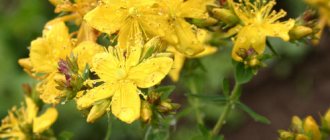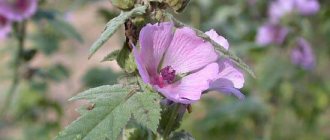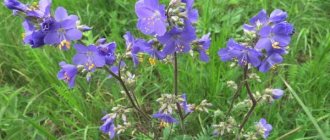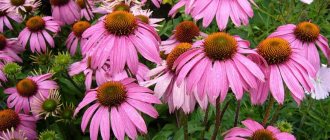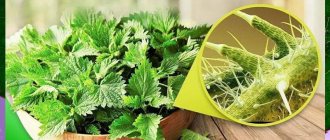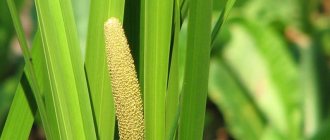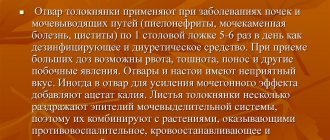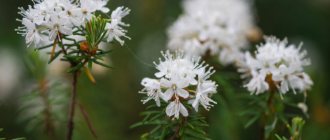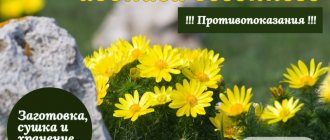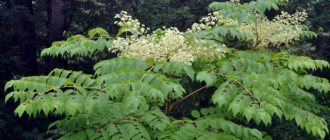Common cuff (bear's paw, heavenly dew, female grass, breastfeeding, rue, tripericum, dewberry, malady - a perennial creeping herbaceous plant from the Rosaceae family. It has long been used for diabetes mellitus, bronchopulmonary pathologies and women's diseases, and is popularly believed to be outwardly inconspicuous The plant heals many ailments.
Distributed throughout Europe, eastern Africa, North America, Greenland and in places in Asia. It is found almost everywhere in Russia, with the exception of the southernmost regions. Prefers meadows and forests (pine and mixed), found along roadsides, in arable lands, near swamps.
The medicinal properties and contraindications of the cuff have been studied quite well today. The mantle plant has found use in official and folk medicine, but, in addition to medicinal purposes, young leaves are used for food: added to green cabbage soup, salads, and pickled for future use. In Armenian cuisine, cuff is the main component of a signature soup consisting of the herb and its decoction, as well as pomegranate seeds.
What kind of grass is mantle, what does it look like and where does it grow?
Mantle grass grows in North America, Asia, East Africa, Europe, the CIS countries, Siberia - in meadows, forest edges, forests and along roads.
photo of a plant in its natural habitat
The botanical description is characterized by the following features:
The root of the cuff is thick and strong with numerous branches. The stem reaches 40 cm, branched, creeping. The leaves of the cuff have a rich green color, palmate-lobed structure and a round shape with frills. Dew accumulates in the middle of the leaf, for which the cuff is nicknamed the tear of God. The plant blooms all summer, and under favorable conditions it can bloom twice per season. The flowers are inconspicuous, small, greenish-yellow, collected in an inflorescence - false umbrellas. Forms fruits - nuts with cups. Propagated by seeds and vegetatively.
About 40 species of the plant are known, but only the sparkling cuff and the common cuff, which have general healing abilities, are used in medicine.
Composition of grass cuff
The cuff, the medicinal properties and contraindications of which are determined by the chemical composition, is rich in the following biologically active components;
- Phytosterols;
- Ascorbic acid;
- Phenolcarboxylic acids;
- Lignins;
- Tannins;
- Flavonoids;
- Fatty acids;
- Coumarins;
- Lipids;
- Leukoanthocyanidins;
- Bitters, resins;
- Kakheti;
- Minerals (iron, boron, copper, manganese, zinc, molybdenum, nickel).
For harvesting, the plant can be collected in the wild, or it can be grown at home
Morphological description
The stem is branched, reaches a height of 30-40 cm, rises above the ground or is erect.
The lower leaves are kidney-shaped, dissected almost to the middle into 7-11 concave lobes. Stem leaves are sessile or short-petiolate. The venation is radial, the edges of the leaves are wavy.
The leaves have a palmate structure and a memorable rounded shape, reminiscent of a cuff with edges and wavy edges. In the early morning, droplets of moisture can be seen on the leaves, which some confuse with dew.
In fact, this is excess moisture that the plant itself releases. It is believed that this moisture perfectly rejuvenates and tones the skin, prevents aging: you can drink it, or use it instead of tonic.
The flowers are small, inconspicuous, yellow-green, collected in false umbrellas in large numbers. Flowering occurs over a long period, from June to September.
The healing properties of the cuff
The benefit of the common cuff lies in its therapeutic effects:
- Stimulates the activity of the endocrine glands and the formation of hormones;
- Relieves inflammatory processes, eliminates bacterial infections, removes staphylococci, salmonella, fungi and ammonia from the body;
- Stops bleeding;
- Normalizes cardiovascular function, narrows blood vessels and improves their elasticity, reduces permeability and fragility of capillaries;
- Improves the functioning of the central nervous system;
- Increases physical and mental activity, strengthens the immune system;
- Normalizes the functioning of the stomach and intestines, eliminates the symptoms of poisoning with poisons and heavy metals;
- Regulates mineral metabolism, improves metabolism, accelerates the process of energy formation;
- Stimulates the functioning of the kidneys and liver, accelerates bile formation and its removal from the body;
- Normalizes hematopoiesis, improves the process of iron absorption, which prevents the occurrence of anemia;
- Neutralizes the destructive effect of free radicals, providing an anti-sclerotic effect and preventing the process of premature aging of the body.
The cuff has an astringent, wound-healing, immunostimulating, anti-inflammatory, detoxifying, antioxidant, enterosorbing effect on the human body.
Contraindications and harm of the cuff
If there are no medical restrictions on taking the cuff, then this plant is a safe remedy approved for use by adults and children. Contraindications are increased blood clotting and individual intolerance. In rare cases, a side effect such as diarrhea may occur.
with a cuff, various medical and homeopathic remedies are prepared for the treatment and prevention of various diseases
Use for weight loss
People who want to lose weight and look better are often interested in the healing properties of the cuff. They help restore normal metabolism, help stabilize blood circulation, improve the functioning of the digestive system and normalize hormone function. As mentioned above, the cuff helps get rid of skin diseases . In addition, it brings her back to normal. It becomes elastic, smooth and acquires a healthy color.
During training, the plant promotes accelerated fat burning. But energy is not lost, but rather accumulated. Baths and compresses are recommended for people who are trying to prevent the formation of cellulite. This happens due to an increase in the rate of metabolism in the body. Approximately 40 g of dry herb collection is poured with a liter of hot water and left for ½ hour until completely brewed. Compresses should be done in those places where cellulite is directly present. But in addition to baths, you also need to follow a diet and exercise or exercise.
Pharmaceutical preparations with a common cuff
The common cuff is used in medicine, homeopathy, medicines are prepared on its basis, the plant is included in herbal preparations, balms and dietary supplements for the treatment and prevention of many diseases.
Common mantle grass is a dry raw material for preparing medicinal infusions and decoctions.
Elixir "Ginex" is a homeopathic medicine for the treatment of diseases of the stomach, spleen, pancreas, gynecological diseases, and hormonal imbalances.
“Gineconorm” is available in the form of herbal phytocapsules intended for the treatment of menstrual disorders, uterine fibroids, fibroids, cervical erosion, uterine bleeding, pyelonephritis, cystitis.
Indications for oral use
Indications for the use of the cuff herb include poisoning, intestinal disorders, diarrhea, gout, and ascites. Anti-inflammatory, antibacterial and immunostimulating properties are relevant in therapy:
- bronchitis;
- pneumonia;
- flu;
- tuberculosis;
- rheumatoid arthritis.
The culture is beneficial for the gastrointestinal tract (GIT). Can be used for therapy:
- peptic ulcer of the stomach and duodenum;
- colitis;
- gastritis with insufficient secretion;
- anorexia;
- hemorrhoids.
Herbal raw materials are also recommended for obesity. The herb regulates metabolism, stimulates the elimination of excess water and fat reserves, therefore it is actively used for weight loss (along with physical exercise).
Traditional medicine recipes. Preparation of remedies and treatment. List of diseases
The beneficial properties and contraindications of the cuff allow it to be used in the treatment of pathological conditions:
- Gynecological diseases: inflammation, vaginitis, menopause, uterine bleeding.
- Digestive organs: gastrointestinal ulcers, peristalsis disorders, dyspepsia, inflammation of the liver and bile ducts, cholecystitis, colitis, enterocolitis, diarrhea.
- Respiratory organs: pneumonia, bronchitis, laryngitis, cough, tuberculosis.
- Urinary organs: cystitis, pyelonephritis, ascites.
- Metabolism: diabetes, obesity, gout.
- Cardiovascular system: atherosclerosis, hypertension, thrombophlebitis, varicose veins.
- Nervous system: neuroses, insomnia.
- Skin: eczema, wounds, burns, ulcers, acne, ulcers.
To treat these diseases, the cuff is used to prepare decoctions, infusions, tinctures and other medicinal products.
For the preparation of medicinal products, the above-ground part of the plant is used, which has the greatest medicinal effectiveness.
Infusions
The infusion relieves inflammation of the intestines and enhances its peristalsis, heals hemorrhoids, and accelerates the removal of mucus from the bronchi. A cuff is useful in gynecology - in case of heavy menstruation, bleeding, leucorrhoea, douching is performed. An infusion in the form of a compress removes inflammation of the eyes and treats a runny nose.
- boiling water in the amount of 250 ml. and 3 tsp. the herbs are placed in a warm place for two hours. Strain and drink 1/2 cup before meals up to 4 times a day or use for procedures.
Tinctures
Alcohol tincture is used to treat the urinary and digestive systems:
- 50 gr. The cuffs are added to half a liter of alcohol, sealed and placed in a warm and dark place to infuse, during which the contents are periodically shaken. After two weeks, filter and take a teaspoon before meals.
For heart pain and sluggish metabolism, prepare an infusion of red wine:
- 200 gr. dry red wine and 5 gr. combine herbs. Seal the container and place in a dark place for a day. Strain the finished infusion and drink 1 tbsp up to 3 times a day. l.
Decoctions
The decoction is used externally as an anti-inflammatory and wound-healing agent for weeping eczema, acne and itchy wounds. It is taken orally for bleeding and coughing as an antitussive and expectorant. The drink helps with rheumatism and gout.
- 2 tbsp. l. Place the leaves of the plant in a container with a glass of water and let it simmer for 5 minutes. Strain the cooled broth and drink 1/2 cup up to 3 times a day before meals.
Juice
The juice is squeezed from young stems and leaves. For diseases of the gastrointestinal tract, dysentery, diarrhea, take 1 tsp. up to 4 times a day.
leaves of the cuff are used in medical practice and in cooking
Leaves
Cuff leaves are rich in resinous substances, ascorbic acid, phytosterol and phytohormones, similar to female hormones. Therefore, it is recommended to use decoction and infusion with leaves to relieve the symptoms of menopause. The leaves contain less tannins (up to 2.5 mg), but more vitamin C (up to 200 mg). Therefore, young leaves are used in cooking to enrich dishes with vitamins and other useful substances. To do this, they need to be scalded with boiling water, cooled and used in preparing salads, vinaigrettes, and vegetable dishes. You can make a decoction of 5-6 leaves and a glass of boiling water and add it to compote or kvass in a ratio of 1:5.
Salad
A healing salad is prepared with the cuff, which replenishes the body with useful substances, has a therapeutic effect and a preventive effect against the occurrence of various diseases.
- Young leaves of the cuff are immersed in boiling water for a couple of minutes, the water is drained. Spinach, sorrel, onion, and dressing are added to the leaves.
Tea
The drink is useful for relieving an attack of menopausal syndrome and relieving pain during heavy menstruation. Tea with cuff normalizes the functioning of the stomach and intestines, improves metabolism, and is taken for weight loss. Helps with colds, fever, stress, insomnia, obesity.
- 2 tsp. cuffs and 250 ml. Leave boiling water for 10 minutes, then strain and drink up to 3 cups throughout the day.
tea with cuff has a wide range of therapeutic effects and is recommended for use by all categories of citizens
The benefits of tea with cuff for weight loss are explained by the warming effect, stimulation of blood circulation and metabolism, which promotes active weight loss.
Fees
The common cuff is included in medicinal herbal preparations that have a therapeutic effect for various diseases.
For diabetes: take flax seeds, mantle grass, juniper, blueberry leaves - all in equal proportions. 2 tbsp. l. The medicinal mixture is placed in a container with 1/2 liters. water. Keep on low heat for 10 minutes. Drink 10 ml of the infused and cooled decoction. twice a day.
For infertility: take mantle, black pepper, cinnamon bark, pepper knotweed in equal quantities. 1 tbsp. l. the collection is poured with a glass of boiling water, brought to a boil and simmered over low heat for 10 minutes. The cooled broth is drunk throughout the day.
For inflammation of the ovaries, vaginosis and vaginitis: take cuff and sage herbs in proportions of 3 and 1 tbsp. l, pour 1/2 l. boiling water, leave for 20 minutes. Take the infusion orally, one teaspoon at a time. three times a day and douching with warm infusion.
History, popularization and scientific research
Ancient alchemists attributed magical properties to the plant and used “heavenly dew” (moisture that collects on the leaves) as an elixir of life. With the help of the same dew, ancient scientists tried to create a “philosopher’s stone”.
In Western Europe during the Middle Ages, the plant was also credited with witchcraft powers; it was believed that dew could restore youth and beauty. This tradition is still preserved in Switzerland - acne and freckles are removed by wiping the face with dew, and older ladies use the moisture of the plant to rejuvenate the skin.
- The healing properties of the plant have been known in Rus' for centuries. Traditional healers in the southern regions of our country still prepare an infusion of the plant using high-quality grape wine and use it for dropsy, diarrhea, heart pain, and bronchopulmonary diseases. Plant preparations are actively used to treat female diseases.
- Cases have been described that plant preparations cured pulmonary tuberculosis due to the activation of metabolism, which accelerates the healing of cavities.
- In German folk medicine, infusions of the cuff are used for malaria, diabetes, atherosclerosis, anemia, rheumatism, colic, dropsy (ascites). During pregnancy, for the normal course of childbirth, a month before the expected due date, German healers recommend taking half a glass of infusion of the leaves of the plant 3 times a day. And the same recipe is recommended for newlyweds planning a child (similar to how we take folic acid).
- In studies by herbalist, Doctor of Medical Sciences O.D. Barnaulov, the feasibility of using cuff preparations for dysmenorrhea was proven.
- During experimental studies by scientists from the Novosibirsk State Scientific Center for Virology and Biotechnology “Vector”, it was proven that drugs based on the cuff are active against influenza viruses.
- The antioxidant, regenerative, wound-healing, and vascular-strengthening properties of the cuff are protected by patents from the Laboratory of Phytochemistry of the Central Botanical Garden of the Siberian Branch of the Russian Academy of Sciences, located in Siberia.
The common cuff is not one of the pharmacopoeial plants of Russia, but has found wide use in folk medicine and homeopathy. Included in the European Pharmacopoeia, as well as the British Herbal Pharmacopoeia.
Treatment for men
For men, the cuff is a good remedy for impotence. It eliminates inflammation and infectious lesions of the genitourinary system, restores reproductive function, treats prostatitis and urethritis. Therapeutic products with a cuff regulate cholesterol levels and strengthen blood vessels, which is very important for men, since they are more susceptible to cardiovascular diseases.
the herb has a beneficial effect on maintaining women's health and beauty
Composition of grass
The cuff is very rich in vitamins and other useful microelements. It contains:
- Vitamin E.
- Ascorbic acid.
- Zinc, copper and molybdenum.
- Sahara.
- Tannins.
Previously, the complete pharmacological composition of the cuff was described in a medical textbook dating back to 1835 by a professor from St. Petersburg.
Elderly people use a pressure cuff and I consider it the best remedy for this.
In Tsarist Russia, doctors prescribed cuff tinctures to patients to strengthen the immune system and improve performance.
Treatment of women
If a woman has health problems in the gynecological area, the cuff gives a good therapeutic effect. The phytohormones contained in the plant can normalize hormonal levels, alleviate menopause and have a therapeutic effect in case of infertility. To treat inflammation of the uterus, erosions and leucorrhoea, a herbal decoction is prepared:
- mantle, hogweed, burnet root and bergenia (in proportions 3:1:1:1). 2 tbsp. l. Place the mixture in half a liter of water, bring to a boil and simmer over low heat for 3 minutes. Leave for an hour and strain. Use the product warm for douching up to 2 times a day. The course of procedures is 10 days (not during menstruation). The duration of therapy is from 2 to 6 months, but consultation with a doctor is necessary.
The cuff during pregnancy is approved for use from the 14th week. It helps prepare the mother's body for childbirth and reduces nervous excitability. The expectant mother can drink tea from the cuff; the drink helps with the incorrect location of the placenta and the threat of miscarriage. After childbirth, the cuff stops bleeding and helps increase breast milk production.
Reproduction
Mantle grass reproduces by seeds and vegetatively. Seeds are pre-sown in containers for seedlings. The boxes are filled with well-drained, nutritious soil. It is advisable to add a layer of pebbles or expanded clay to the bottom. The seeds are buried 7-10 mm. All procedures are carried out in November or March. When planting in autumn, containers with seeds, 2 weeks after sowing, are taken outside and left in a place protected from drafts and direct sunlight.
In the spring, the containers are brought into a warm, bright room and, having undergone natural stratification, the seeds quickly sprout. When the seedlings grow 2-4 true leaves, they are planted in separate peat pots. At the end of April, if the weather is consistently warm, the plants can be planted in open ground in a permanent place. Already in the first year, the seedlings bloom.
An overgrown cuff bush can be easily divided. Sometimes lodging stems take root on their own. The shoots with their own rhizomes are cut off from the main plant with a sharp blade, dug up and transplanted to a new place. The distance between bushes should be at least 30 cm. The best time for division is early spring.
Cuff in cooking
The cuff is eaten; young shoots and leaves are used for this purpose. They prepare salads, cabbage soup, and soups. For the winter, powder is prepared from the cuff for seasoning second and first courses. The plant is pickled with other herbs, as well as vegetables. The taste of the cuff is slightly tart and bitter. The flowers of the plant are crushed and used to prepare a variety of pastes and spreads for sandwiches.
the beautiful decorative appearance of the cuff allows it to be used in decorating parks and gardens
Collection and preparation
The plant is harvested during the flowering period, i.e. in fact throughout the summer. Collect after the leaves are dry from moisture. For medicinal use, the entire aerial part with root leaves is harvested and dried in a ventilated room or under a canopy in the open air. If the weather is bad, you can dry it in dryers at a temperature of no more than 60 degrees. The finished raw materials have a bitter, tart taste.
Cuff grass is stored in glass jars or bags for 12 months - during long-term storage the raw material becomes very bitter.
In cosmetology
Thanks to its rich chemical composition, the cuff has found application in cosmetology. The flavonoids included in its composition smooth the skin and eliminate cellulite. For these purposes, prepare a decoction:
- 15 gr. parsley and 25 gr. Pour boiling water over the cuffs (all dry) and leave for 1.5 hours. Then strain and drink according to Art. l. twice a day.
An effective herb for cellulite in the form of lotions from a solution:
- 30 gr. cuffs and 300 ml. leave boiling water in a warm place for an hour. Strain and place the steamed herb on gauze or cloth and apply to the problem area of the body.
It is good to wipe the face with acne with a decoction of the cuff. You can make ice from the infusion and use it for daily skin care. The product rejuvenates, makes the skin soft and fresh. The herb extract is included in caring creams.
For cellulite
Breast grass is used in home cosmetology to eliminate cellulite. This is explained by the plant’s ability to restore elasticity to the skin, activate blood circulation, and enhance metabolic processes.
- For internal use, you need to add 10 g of dried raw materials of this plant to 30 g of fresh washed mantle greens. The mixture is kept in 250 ml of boiled water for an hour. You should drink 50 ml of strained infusion before meals.
- To make compresses, brew 40 g of dried breast milk with a liter of boiling water. After infusion for forty minutes, the liquid is filtered, and the remaining steamed herb is spread on areas with cellulite. Leave under film and towel for 30 minutes.
You can also make compresses using strained infusion, soaking a soft cotton cloth in it and spreading it over the skin. Remove the compress after 35-40 minutes.
Notes
- For the convention of indicating the class of dicotyledons as a superior taxon for the group of plants described in this article, see the section “APG Systems” of the article “Dicotyledons”.
- Alchemilla vulgaris L.
(English): taxon name information on The Plant List (version 1.1, 2013) (Accessed 28 May 2016). - Sedov A. L.
Alchemists’ grass or “God’s tear” - According to the GRIN website (see Links section).
- Alena Litvinenko.
Siberian scientists fight herpes with the help of plants..
Science in Siberia
(07 February 2018).
Contraindications
There are no side effects reported at this time. However, there are contraindications to the use of the cuff.
First of all, these are people prone to severe allergic reactions, as well as children under 16 years of age.
You also need to be extremely careful in the amount of its use; excessive consumption can cause severe intoxication of the body, an allergic reaction, dyspepsia, and frequent urination.
Name
Common names: breast grass, sick, breast grass, bear's paw, borka, forest loaf, forest horseradish, rue, gourd of the heart, ramwort, God's tear, aksyutina grass, garnik, gourd, kopitnik, zapolnik, star grass, kalchuznik, goose foot, small frog, little paw, mashko, midges, interdigital, tripericum, creep, love spell, love spell, darling, crabgrass, common crabgrass, dewberry, sundew, hare cabbage, hat, pork tongues, lop, lop, lion's paw and lion's paw.[3]
